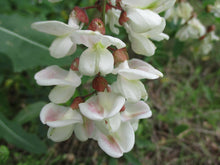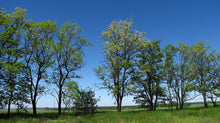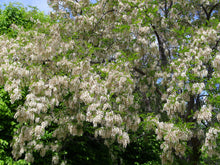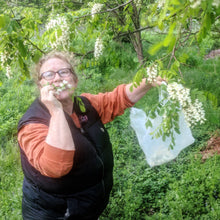'Nyirségi' Black Locust
Regular price
$4.00
Sale
Robinia pseudoacacia
Origin: Hungary
Improvement status: Cultivar
Seeds per packet: ~25
BOTANICAL SAMPLE - NOT GERMINATION TESTED
Life cycle: Perennial
A common tree in much of the US today, the original range of black locust is thought to be the Eastern Appalachian mountains and the Ozarks. Black locust is a thorny, suckering tree that will generally keep coming back after being chopped to the ground. Like many native trees, black locust is a pollinator magnet and provides lots of nectar for honeybees. It’s long been used by farmers and homesteaders for building, fencing, and firewood, because it's one of the most durable, rot-resistant native hardwoods (surpassed by Osage orange and little else). It also burns as hot as coal.
Black locust recently gained traction among agroforestry practitioners as a coppice species providing animal forage and nitrogen cycling services. A truly versatile plant, its aromatic cream-colored flowers are delicious batter dipped and fried. They also make a great springtime iced or hot tea. The seed pods contain a tangy, sweet paste, like a North American version of tamarind.
'Nyirségi' is a cold hardy (Zone 5) Hungarian forestry selection with a straight and tall growth habit, making it ideal for various timber uses. Our seed was imported from Hungary by the good folks at Sheffield's Seed Company in Locke, NY.
GROWING TIPS: No cold stratification required, but scarification greatly helps germination rate. Soak seeds in hot water for 24hrs before planting time, letting them swell to 3x their original size (if this fails, try boiling water or sulfuric acid). Or fall seed to let the winter weather break down the seed coating. Sow seed 1/4" deep. Trees can reach 80 feet. Prefers full sun and dry to medium soil. Flowers May-June.
NOTE: Photos do not necessarily depict the 'Nyirségi' variety (but the image of the row of trees is similar). All images are in the public domain, except the one of our dear friend and board member Sally McCabe, which was taken by Nate.








